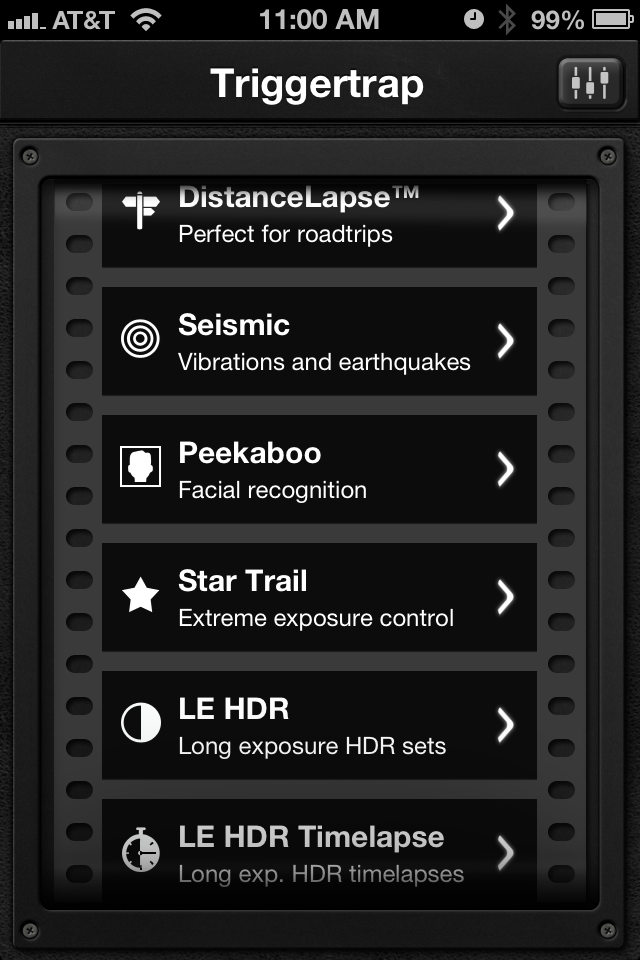I’ve been meaning to write a review up on Triggertrap for quite a while now but a number of things have been getting the way of letting me do it. Part of the reason is the task was quite daunting – Triggertrap is not a simple app or a tool with just one or a few use cases. Rather this combo of app and hardware is so versatile, I feel you could write a book on the many ways and techniques for using it. I’m not exactly up to writing a book on the subject just yet, so I decided that rather than delay any longer, I would break up the review into small, focused bits.
In this first part, I just want to cover one feature of the iOS app – Facial Recognition! But first, let me explain exactly what Triggertrap Mobile is.
In a nutshell, Triggertrap is a cable release for your camera. A very, very fancy cable release with a plethora of applications and use cases. There are two components: (a) an iOS application, which on it’s own is an awesome standalone, must-have app even if you only shoot with your iPhone and nothing else, and (b) a dongle that connects your iPhone to your DSLR camera (there are actually two parts to this – the dongle itself and a standard camera cable). Once connected, you can then use your iPhone to trigger your camera shutter, just like a regular cable release. You can also use it to trigger the shutter based on a huge number of functions, such as audio cues (a clap, whistle, bang, etc), time-lapse, motion detection, facial recognition, vibration, and many, many more. You can use all these functions with your dslr or standalone just using your iPhone camera.

So – facial recognition. I own a number of iOS camera apps, but none of them offer a facial recognition feature. Triggertrap’s facial recognition feature is flawless; it tracks faces with uncanny precision. The facial recognition module features a slider that lets you set the number of faces to trigger on (1-5). Perfect for setting up a shot where your phone is mounted on a tripod and you want to get yourself and possibly others in the photo.
For more information on Triggertrap Mobile, visit their website and also be sure to download and try the free version of the app!
The only downsides I’ve seen with the Triggertrap system so far:
- the dongle fits into the headphone jack of the iPhone, but it won’t fit with some iPhone cases, including my favorite, the Vapor Pro from Element Case. In the case of the Element Cases, you need to use a special tool to remove the case. This is a major pain when you’re on the road or on location – I usually don’t carry the tool with me, so if I have the case on the phone at a shoot location I’m stuck with not being able to use the TriggerTrap dongle (this actually happened to me). TriggerTrap could resolve this by improving on the connector pin design so that it’s slimmer and follows the profile of most headphone connector pins better.
- you need to mount your iPhone onto your tripod along with your camera. This might seem obvious or a minor point, but I think the folks at TriggerTrap could have made a wireless version of there dongle. I would have much preferred this. Then, I could put the phone anywhere, and not necessarily have to mount it on my camera. This might not make sense for things like facial recognition, where you want the phone and camera to have as close a perspective as possible, but for other triggers like sound, vibration, etc. there is a good use case for it. I would like to see them offer a wireless dongle setup, even if it cost more – it might be a nice second option for some.
UPDATE: Triggertrap has a new , slimmer dongle design which solves my above comment.
